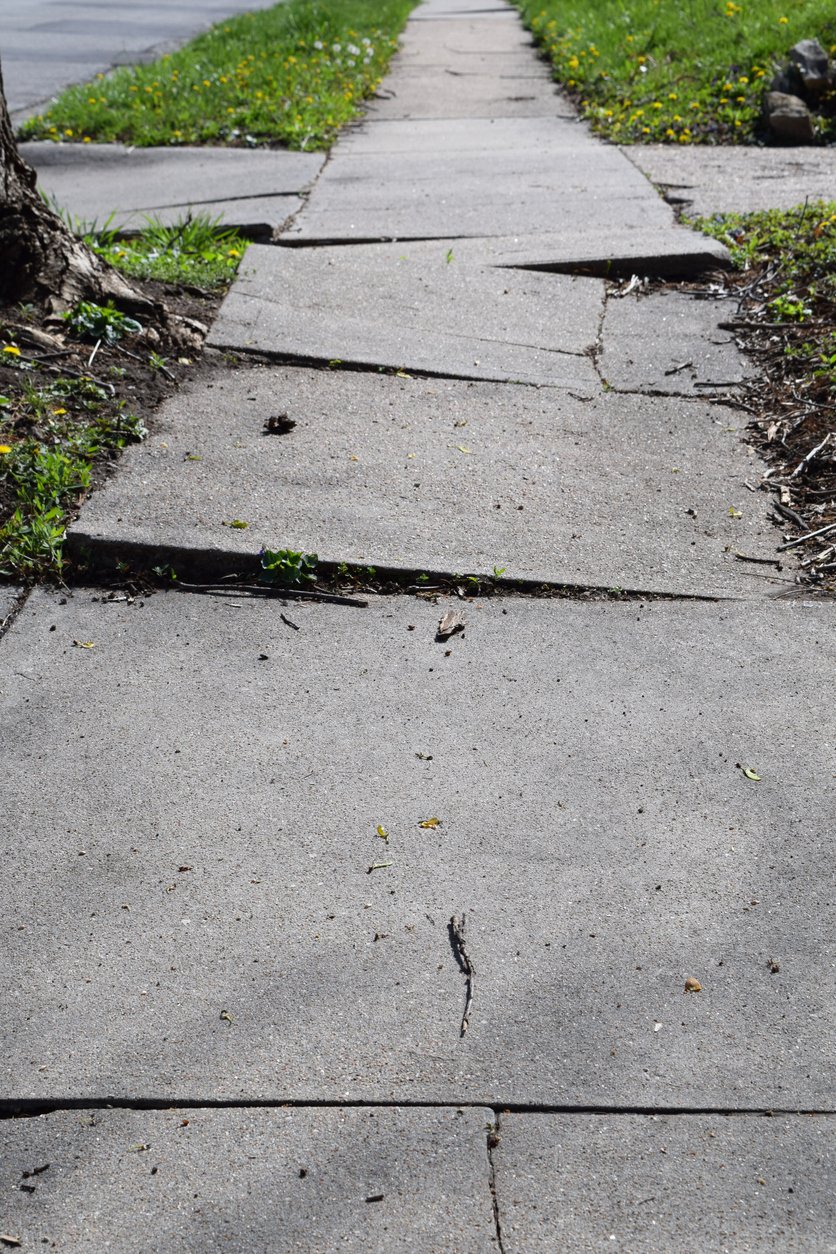Introduction
Sidewalks are an essential part of our daily environment, providing safe pathways for pedestrians. However, over time, sidewalks can become uneven due to wear and tear, weather conditions, or even tree roots. While an uneven sidewalk may seem like a minor inconvenience, it poses a significant safety risk and could result in accidents or legal liability for property owners.
1. Why Uneven Sidewalks Are a Safety Concern
Uneven sidewalks may not always be immediately noticeable, but they can create a dangerous walking environment. Even a small height difference between concrete slabs can cause someone to trip, leading to falls, injuries, and other serious consequences. Here are the primary reasons why uneven sidewalks are such a concern:
- Tripping Hazards: The most obvious risk is tripping. When one part of the sidewalk is raised or sunken, pedestrians are more likely to catch their feet and fall. This is especially dangerous for children, the elderly, and people with mobility issues.
- Slips and Falls: In addition to tripping, uneven surfaces can cause balance issues, particularly in wet or icy conditions. A slightly tilted sidewalk can cause someone to slip, leading to falls and potential injuries.
- Wheelchair and Stroller Accessibility: Uneven sidewalks create challenges for wheelchair users, strollers, and others with mobility aids. Raised or sunken sections can be difficult to navigate, posing accessibility issues and potentially violating the Americans with Disabilities Act (ADA).
- Bicyclist Safety: Uneven sidewalks can also be dangerous for cyclists and people on scooters, causing unexpected bumps or jolts that may lead to loss of control.
Ignoring these hazards puts pedestrians at risk and leaves property owners vulnerable to potential lawsuits if someone is injured on their uneven sidewalks. Addressing sidewalk repair in Long Island ensures both safety and compliance with local regulations.
2. Legal Implications of Ignoring Uneven Sidewalks
Property owners, whether residential or commercial, are generally responsible for the maintenance of sidewalks adjacent to their property. Failing to address uneven sidewalks can lead to legal consequences. Here’s why fixing uneven sidewalks is not just a safety measure but also a legal responsibility:
- Liability for Injuries: If a pedestrian trips and falls due to an uneven sidewalk, the property owner may be held liable for any resulting injuries. This could lead to costly lawsuits, medical expenses, and even compensation for pain and suffering.
- Violations of ADA Compliance: Uneven sidewalks can make it difficult for people with disabilities to navigate the area, leading to ADA violations. If your property is found to be non-compliant with ADA regulations, you could face fines and legal action.
- City and Municipal Fines: In many cities, local governments require property owners to maintain their sidewalks. If the sidewalk becomes hazardous and remains unrepaired, the city may issue fines or even require the property owner to pay for repairs.
By taking proactive steps to repair uneven sidewalks, property owners can protect themselves from potential legal and financial repercussions.
3. Common Causes of Uneven Sidewalks
Understanding the root causes of uneven sidewalks can help property owners prevent or address the issue more effectively. Some common factors that lead to uneven surfaces include:
- Tree Roots: Tree roots are one of the most common culprits behind uneven sidewalks. As trees grow, their roots can push up the concrete slabs, causing them to shift or crack.
- Weathering and Erosion: Over time, rain, snow, and ice can cause the ground beneath the sidewalk to erode or shift. This can lead to one section of the sidewalk sinking while another remains at its original height, creating an uneven surface.
- Soil Settlement: If the soil beneath a sidewalk wasn’t properly compacted during installation, it may settle over time, leading to sunken or uneven slabs.
- Poor Construction: In some cases, the sidewalk may have been improperly installed or constructed with subpar materials, leading to premature damage and uneven surfaces.
Addressing the underlying cause of an uneven sidewalk is key to implementing a long-lasting solution.
See Also: Custom Air Conditioning Hoses for High-Performance and Race Cars: Why Precision Matters
Conclusion
Uneven sidewalks are more than just a cosmetic issue—they’re a serious safety hazard that can lead to trips, falls, and even legal liabilities. By understanding the causes of uneven sidewalks and taking proactive steps to repair them, property owners can ensure that their sidewalks remain safe, accessible, and compliant with local regulations.
Whether through concrete grinding, mud jacking, or replacement, repairing uneven sidewalks is an investment in the safety and value of your property. If you’re dealing with an uneven sidewalk, consider reaching out to a professional sidewalk repair service to get the job done efficiently and effectively.
FAQs
1. How much does it cost to fix an uneven sidewalk?
The cost of sidewalk repairs varies depending on the method used, the size of the area, and the severity of the damage. Concrete grinding is generally more affordable, while full replacement can be more expensive.
2. How long does it take to repair an uneven sidewalk?
The time it takes to repair a sidewalk depends on the extent of the damage and the repair method. Simple grinding can be done in a few hours, while more extensive repairs like mud jacking or replacement may take a day or two.
3. Can I repair my sidewalk myself?
While minor repairs like filling small cracks can be done by homeowners, major repairs such as leveling uneven slabs are best left to professionals who have the tools and expertise to ensure a long-lasting fix.
4. What are the main causes of sidewalk damage?
Common causes of sidewalk damage include tree roots, soil settlement, poor drainage, and weather-related wear and tear.




